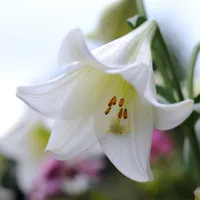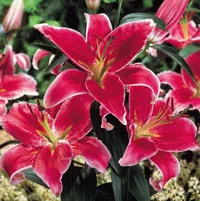How to grow lilies: enjoy sensational summer scent with these stunning flowers
Easier than you might think, learn how to grow lilies and you can plant these up for glorious displays in summer

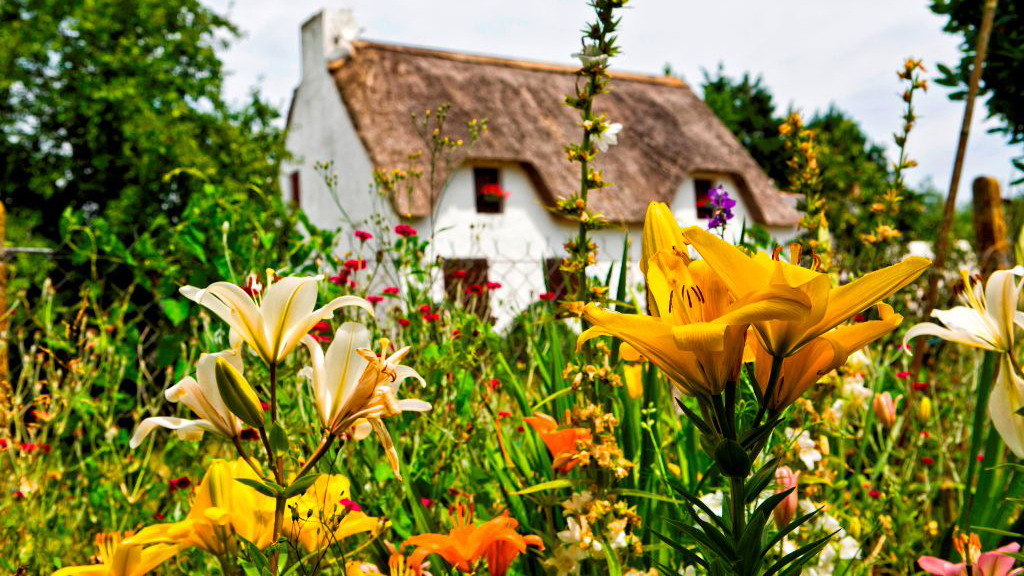
Want to learn how to grow lilies? Think of a classic lily and you’re likely to picture white flowers, but today they come in a wide range of colours, from deep burgundy and vibrant scarlet to bright orange, sunshine yellow and sugar pink.
Spectacular when grown in borders, mixed with complementary perennials and shrubs, lilies also make excellent container plants. Used as focal points on patios, they supply striking splashes of colour and, in many cases, tantalising wafts of perfume.
Among the earliest flowerers are the Turk’s cap (or martagon) lilies – prolific self- seeders that perform well in partial shade – and trumpets such as L. regale. Both are usually planted during the autumn when bulbs are at their peak, but it’s still possible to plant in late winter if you can find good-quality bulbs.
However, more towards spring time, most people are thinking about planting Asiatic lily bulbs. Unscented, they grow to a medium height and have upward- and outward-facing flowers in oranges, dark reds and yellows, appearing from June onwards.
Want to know more? Keep reading for our planting advice and the best varieties to grow in your garden, then check out our guide to garden borders for more expert planting advice.
WHEN TO PLANT LILIES
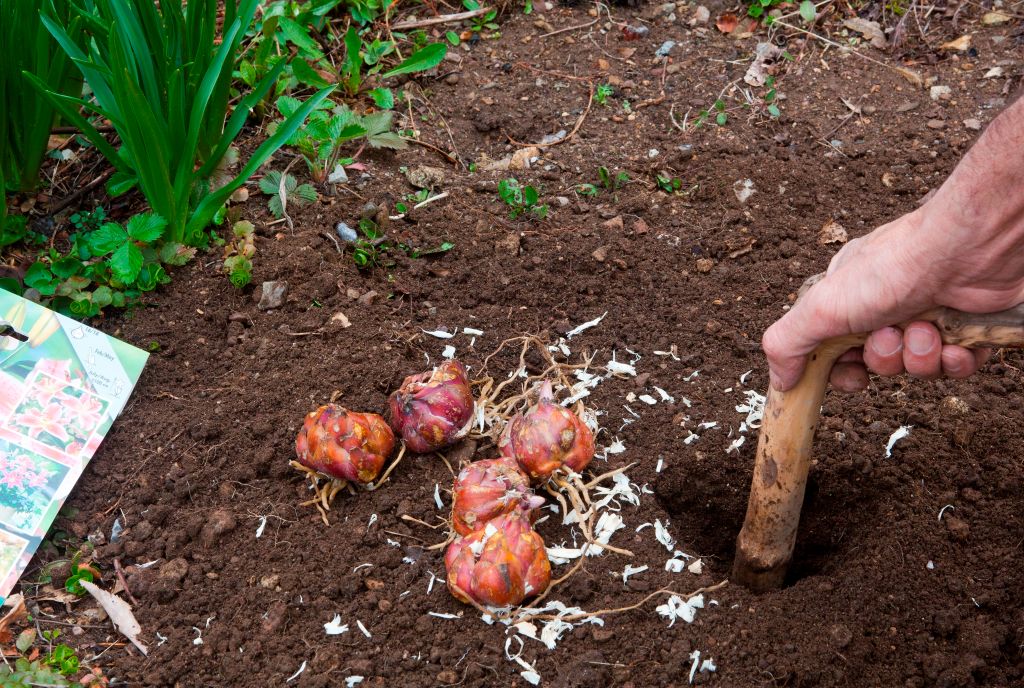
Surprisingly tough – in spite of their exotic looks – lilies can take the cold. Wet can be an issue, though, so grow in well-drained soil to prevent water-logging and reduce the risk of diseases such as botrytis (grey mould).
Plant bulbs in the ground or in pots as soon as they arrive in late February. If you want a succession of colour, simply carry on putting them in at intervals from January into summer – it’s even possible to plant lilies in July for flowers as late as October, although in subsequent years you’ll find they revert to their natural flowering times.
DIFFERENT TYPES OF LILIES
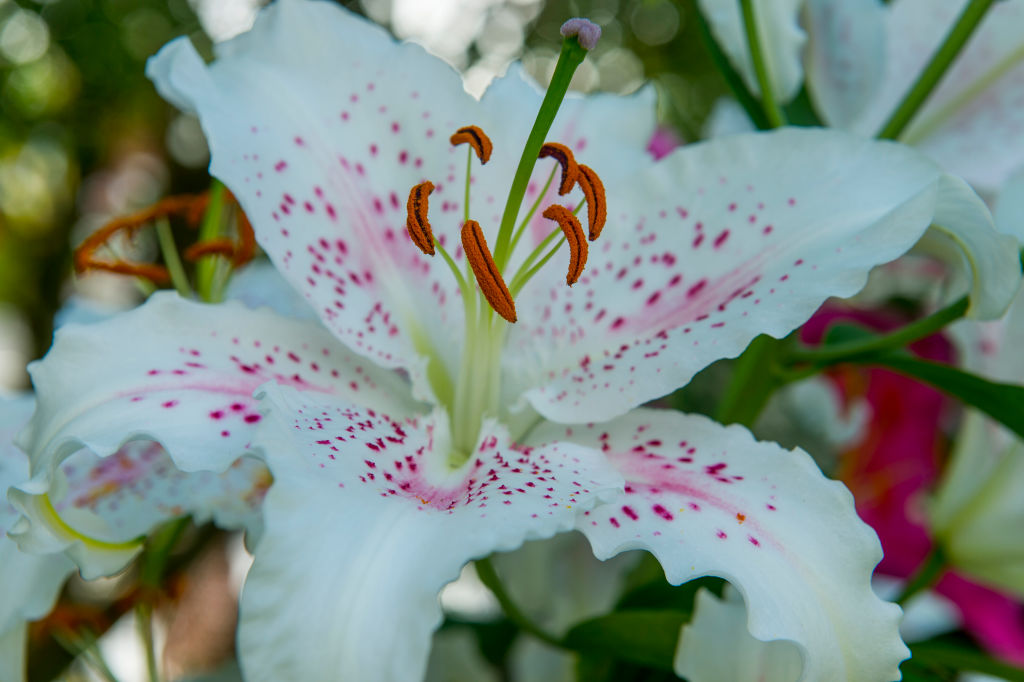
Asiatic lilies grow in most soils, but they prefer a more alkaline environment. This group includes the particularly hardy tiger lily, L. lancifolium – a good naturaliser, even in poor soils – along with dwarf ‘pot lilies’ such as ‘Tiny Ghost’, which will reach just 35cm high.
Oriental lilies are the ones with the heady scent. They prefer acid soil and grow well in the open ground. The Stargazers are the best known. They bloom in July and August, range in height from 90cm-1.5m and often have larger flowerheads.
The Oriental group also includes stunning double-flowered Roselilies, plus newer varieties with increased stem length. Both have the advantage of being free of pollen, which can cause staining if it comes into contact with fabrics.
Not sure whether you have acid or alkaline soil? Our guide to soil types will help you find out.
HOW TO GROW LILIES
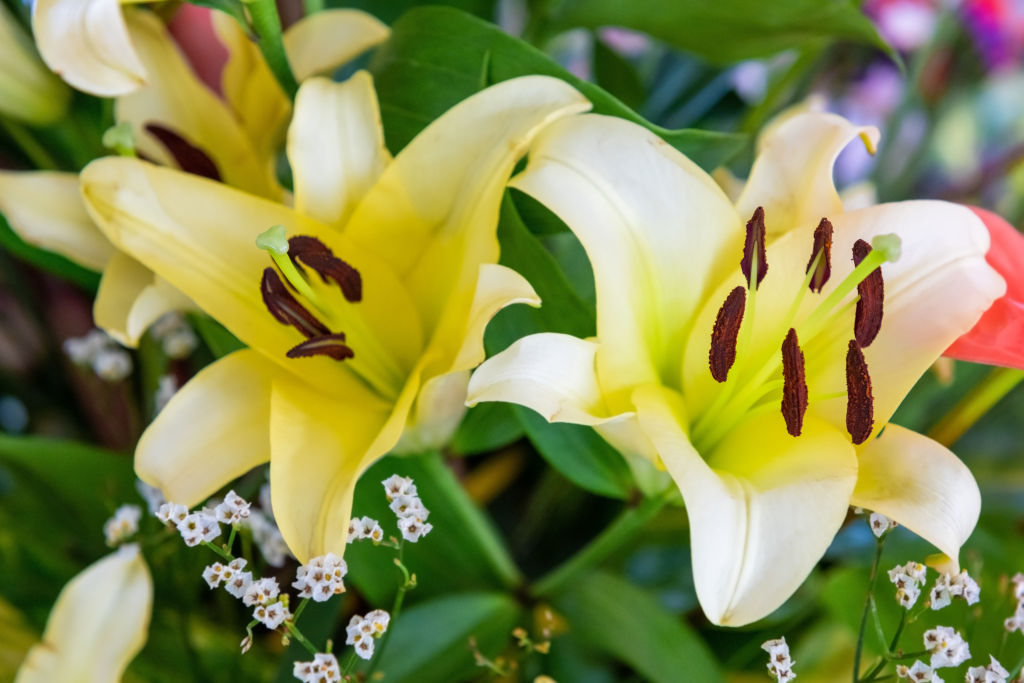
- Whether you're growing lilies in borders or in pots, plant bulbs 10cm deep.
- Space odd numbers of bulbs 12-20cm apart in a border; or plant three in a 25-35cm pot.
- Choose a site that receives at least half a day of sunshine; it’s possible to grow lilies in partial shade, but they will often lean towards the sunlight.
- Old bulbs can be left in the soil or in pots over winter, as long as there is adequate drainage.
HOW TO CARE FOR LILIES
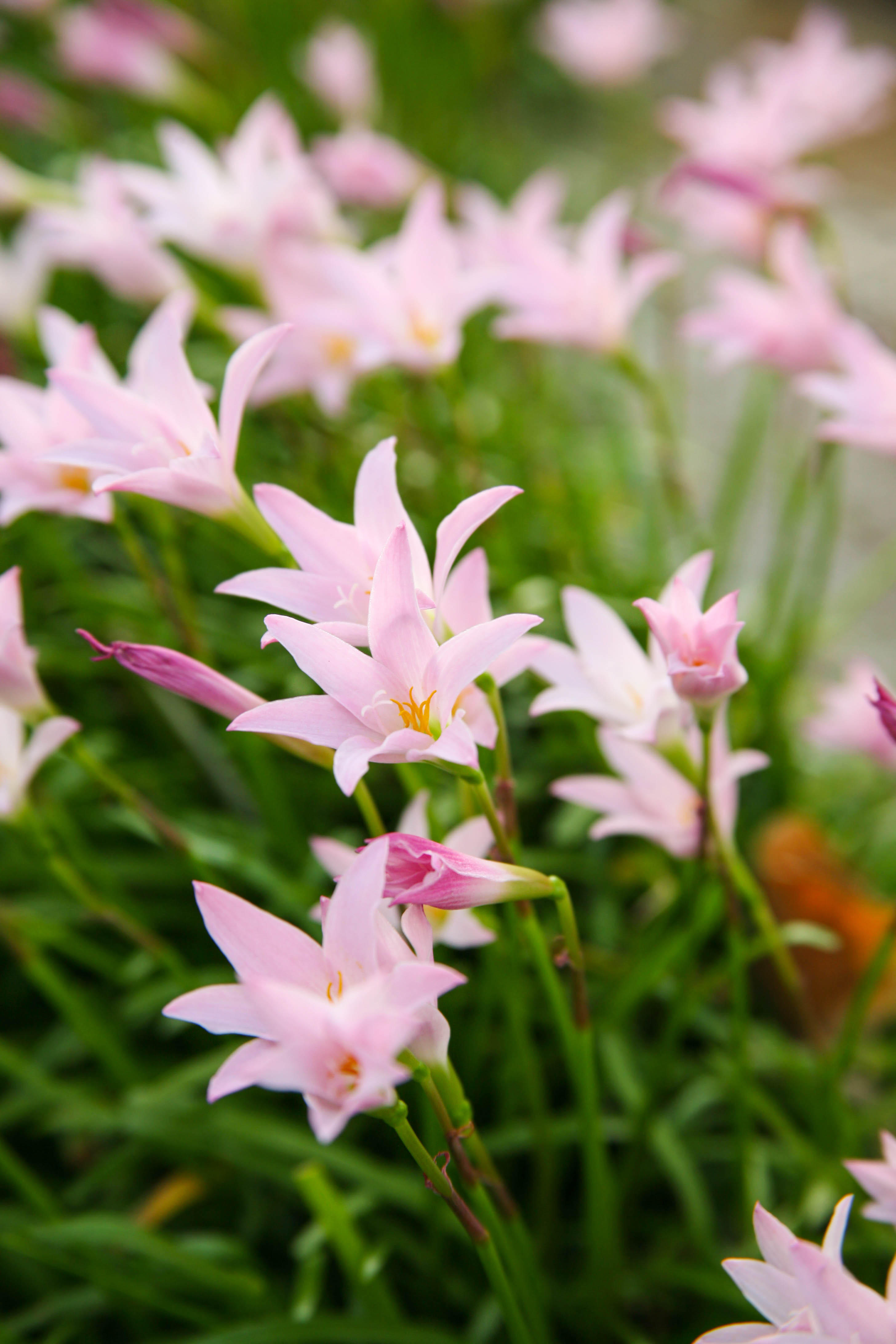
It’s important to feed lilies just as the flowers are finishing, to bulk up the bulbs for next year. Many lilies are self-supporting; however some will benefit from staking or other forms of plant support, especially when grown in windswept areas.
Water regularly, but sparingly, especially the Asiatics. Add liquid tomato feed every fortnight while the lilies are flowering, and afterwards, too, to feed the bulbs.
PROBLEMS TO LOOK OUT FOR
Watch out for lily beetle – adults and grubs munch on leaves and can cause undersized and blind bulbs in subsequent years. This spoils their appearance and if too much top growth is demolished it can’t return goodness to the bulbs as it dies back, meaning poorer flowering next year. Pick off and squash adult bugs, and use an organic pesticide against the larvae.
GROWING LILIES IN CONTAINERS

Growing lilies in containers is a great way to change up your patio gardening ideas. They'll look stunning around in groups of pots on your patio. Why not go for a mix of complementary colours in different pots to create a striking display?
- Plant lily bulbs at 2-3 times their own depth and one bulb’s width apart. Like most plants, they look best planted in odd numbers.
- Label the bulbs and water well. Keep the containers in a frost-free spot (a greenhouse or porch) until warmer weather arrives.
- Grow in John Innes No3 and multi-purpose compost, which balances nutrients with good drainage. Add a granular feed to keep plants robust.
WHAT TO PLANT WITH LILIES
- Summer perennials Try nepeta, also known as cat mint. Bees will flock to the lavender blue blooms. There's more suggestions for bee friendly plants in our guide.
- Delphiniums Lilium regale and delphiniums will add height at the back of a border.
- Roses White lilies planted with red roses complement one another perfectly.
Where to buy lilies
Want to try planting lily bulbs in your garden this year? Use our quicklinks below to head straight to our favourite retailers, or keep scrolling for some of our top varieties to try in your garden.
Shop lilies in the UK
- Buy lilies at Amazon
- Buy lilies at Crocus
- Buy lilies at Dobies
- Buy lilies at Suttons
- Buy lilies at Thompson & Morgan
- Buy lilies at Waitrose Garden
- Buy lilies at You Garden
Shop lilies in the US
4 varieties to try in your garden
Lilium longiflorum 'White Heaven' at Crocus
A winner for weddings, thanks to the beautifully scented, large, pure white flowers,
held on long, elegant stems.
It has a prolific flowering habit, producing ample blooms for the vase. Flowers: Jul-Sept.
H: 90cm-1.5m
‘Delicate Joy’ at Suttons
This warm, peachy Asiatic reaches only 24in (60cm) and is pollen free, so it’s safe for patio edging as it won’t stain clothes or adhere to cat fur.
Lilium 'Casa Blanca' at Crocus
This elegant oriental lily has tall stems with showy trumpet-like blooms – pure white, they give off a heady perfume. Prefers garden soil that is neutral-to-acid, but grows happily in pots filled with ericaceous compost. HxS: 39x15in (1mx15cm).
Stargazer lilies at Suttons
Big, bright and bold, Stargazer lilies add a blast of colour. They are toxic to cats, so if you are a feline household get pollen-free varieties. Plant the bulbs from February to April for blooms from June.

Teresa has worked as an Editor on a number of gardening magazines for three years now. So she is lucky enough to see and write about gardening across all sizes, budgets and abilities. She recently moved into her first home and the garden is a real project! Currently she is relishing planning her own design and planting schemes. What she is most passionate about when it comes to gardening are the positive effects it has on our mental health to grow and care for plants, as well as being great for the environment too and help provide food and shelter for wildlife.
